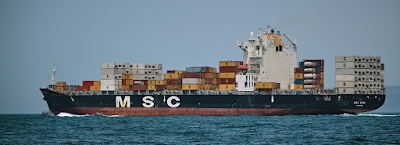The UltraShort Baseline (USBL) acoustic positioning technique, also called as Super Short Baseline (SSBL), includes calculating the product variety and keeping from a boat centered transceiver one, subsea transponder.
The
seabed transponder which may be installed on a mobile focus on such
as an ROV or on a limited focus on such as a seismic wire ground
station is originally placed using data from the ship’s GPS. The
USBL program then provides a range and bearing estimate of the
transponder comparative to the ship’s position.
The
range is measured by calculating the
time
taken from delivering a transponder interrogation indication to
receiving its response. Bearing comes from by evaluating the small
differences in the time of arrival of the response indication at each
recipient factor within the transceiver.
Accurate
and effective localization for low-cost AUVs would lower the hurdle
toward multi-AUV research in stream and sea surroundings. However,
these AUVs present size, energy, and price restrictions that prevent
the use of traditional AUV receptors and acoustic positioning
systems, including great difficulty to the problem of marine
localization. The system uses a single acoustic transmitter placed at
a blueprint and is acoustically inactive on the AUV, reducing price
and energy use, and allowing multi-AUV localization. The AUV has an
ultra-short baseline (USBL) recipient range that uses one-way
travel-time (OWTT) and phased-array ray developing to determine
variety, azimuth, and tendency to the transmitter, offering an
immediate determination of the vehicle location. This estimate is fed
to a particle filter and graph-based removing algorithm to generate a
consistent AUV trajectory.
One
of the main programs for Ultra Short Baseline is as a job referrals
feedback for veins set with an energetic positioning (DP) program. By
applying a transponder on the seabed and using the USBL system to
find out its comparative place, a ship’s DP computer can use the
records to seize the boat in the same place, on the same going
whatever the difficult causes from wind, current and wave activity.
Operationally,
the USBL technique very efficient as acoustic positioning can start
as soon as a transponder has been deployed in the water.
It
is a fearless, new, technical globe. This year will indicate operate
moving of the torch: sales of electronic cameras will surpass those
movie electronic cameras for the new in 2004, and you can bet there
will be no going back. To indicate the finality of this change of
focus, Eastman Kodak recently declared it will stop selling
traditional movie electronic cameras in the United States, Canada,
and Western Europe. The digital revolution has been going on in the
marine globe for a long period, and subsea picture equipment
manufacturers, are changing themselves in an effort to keep speed.
Here is a roundup of the latest still and ROVLights & Cameras,
and components to help commercial divers and underwater vehicles ply
their trade. This independent underwater camera is capable of
examining pipelines of almost any length with benefits of lots of
money. Most are available in ultra-bright LED editions to support
several needs.

No comments:
Post a Comment